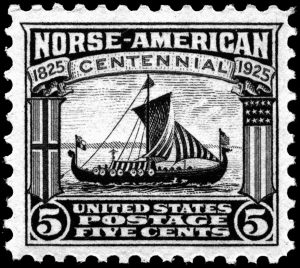How the first large group of Norwegian immigrants came.

Much as in other countries, religious freedom sparked the first major wave of Scandinavian immigration to America after the Revolution—although economic opportunity and hardship back home soon became more important factors. In 1821, a Quaker community in the Stavenger area of Norway sent two members, Knud Olsen Eide and Cleng Peerson, to the United States to scout the fledgling country as a refuge from the Lutheran church. Eide died soon after arrival, but Peerson returned with encouraging reports. On July 4, 1825, a 52-foot sloop, the Restauration, left Stavenger with 52 Quakers and other religious dissenters aboard. After a 97-day voyage, they landed on October 9 in New York harbor, where the plucky pioneers were hailed as Norway’s version of the Mayflower.
The Norwegians made their way to land Peerson had purchased in Kendall, New York, northwest of Rochester. Their descendants in the area today are still known as “sloopers,” after their humble vessel. Future immigrants fanned out from Kendall, including Peerson himself. In 1834, Peerson founded a settlement in the Fox River Valley of Illinois he simply dubbed “Norway.”
Soon word began to flow back to Scandinavia of the opportunities across the Atlantic. The “sloopers” and other immigrants wrote letters home. Another Norwegian, Ole Rynning, arrived in 1837 and wrote a book about his experiences,True Account of America for the Information and Help of Peasant and Commoner. It sold widely in Norway as well as in neighboring Sweden and inspired many to follow Rynning to America. A Norwegian who made his way to Muskego, Wisconsin, published the “Muskego Manifesto” in 1845 in a newspaper back home in Oslo, urging his countrymen to follow him.